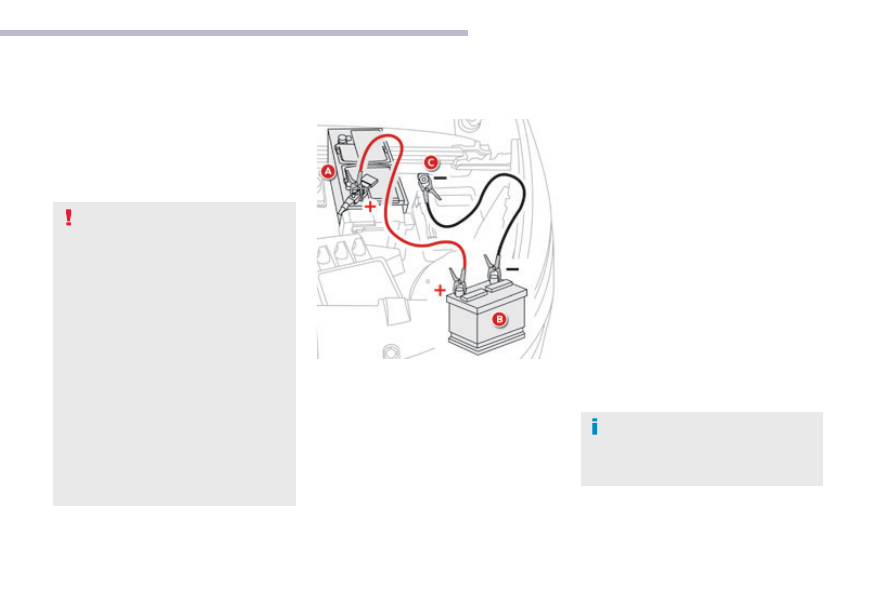Citroen C4 Picasso (2017 year). Instruction - part 21

319
8
In the event of a breakdown
C4-Picasso-II_en_Chap08_en-cas-panne_ed02-2016
F
Start the engine of the vehicle with the
good battery and leave it running for a
few minutes.
F
Operate the starter on the broken down
vehicle and let the engine run.
If the engine does not start straight
away, switch off the ignition and wait a
few moments before trying again.
F
Wait until the engine returns to idle then
disconnect the jump lead cables in the
reverse order.
F
Refit the plastic cover to the (+) terminal, if
your vehicle has one.
F
Allow the engine to run for at least
30 minutes, by driving or with the vehicle
stationary, so that the battery reaches an
adequate state of charge.
Starting using another battery
Some functions, including Stop & Start,
are not available if the battery is not
sufficiently charged.
F
Raise the plastic cover on the (+) terminal,
if your vehicle has one.
F
Connect the red cable to the positive
terminal (+) of the flat battery A (at the metal
elbow) then to the positive terminal (+) of the
slave battery B
or the booster.
F
Connect one end of the green or black
cable to the negative terminal (-) of the
slave battery B or the booster (or earth
point on the other vehicle).
F
Connect the other end of the green or black
cable to the earth point C
on the broken
down vehicle.
Never try to start the engine by
connecting a battery charger.
Never use a 24 V or higher battery
booster.
First check that the slave battery has a
nominal voltage of 12 V and a capacity
at least equal to that of the discharged
battery.
The two vehicles must not be in contact
with each other.
Switch off the electrical consumers on
both vehicles (audio system, wipers,
lighting, ...).
Ensure that the jump lead cables do
not pass close to moving parts of the
engine (cooling fan, belts, ...).
Do not disconnect the (+) terminal when
the engine is running.
When your vehicle's battery is discharged, the
engine can be started using a slave battery
(external or on another vehicle) and jump lead
cables or a battery booster.